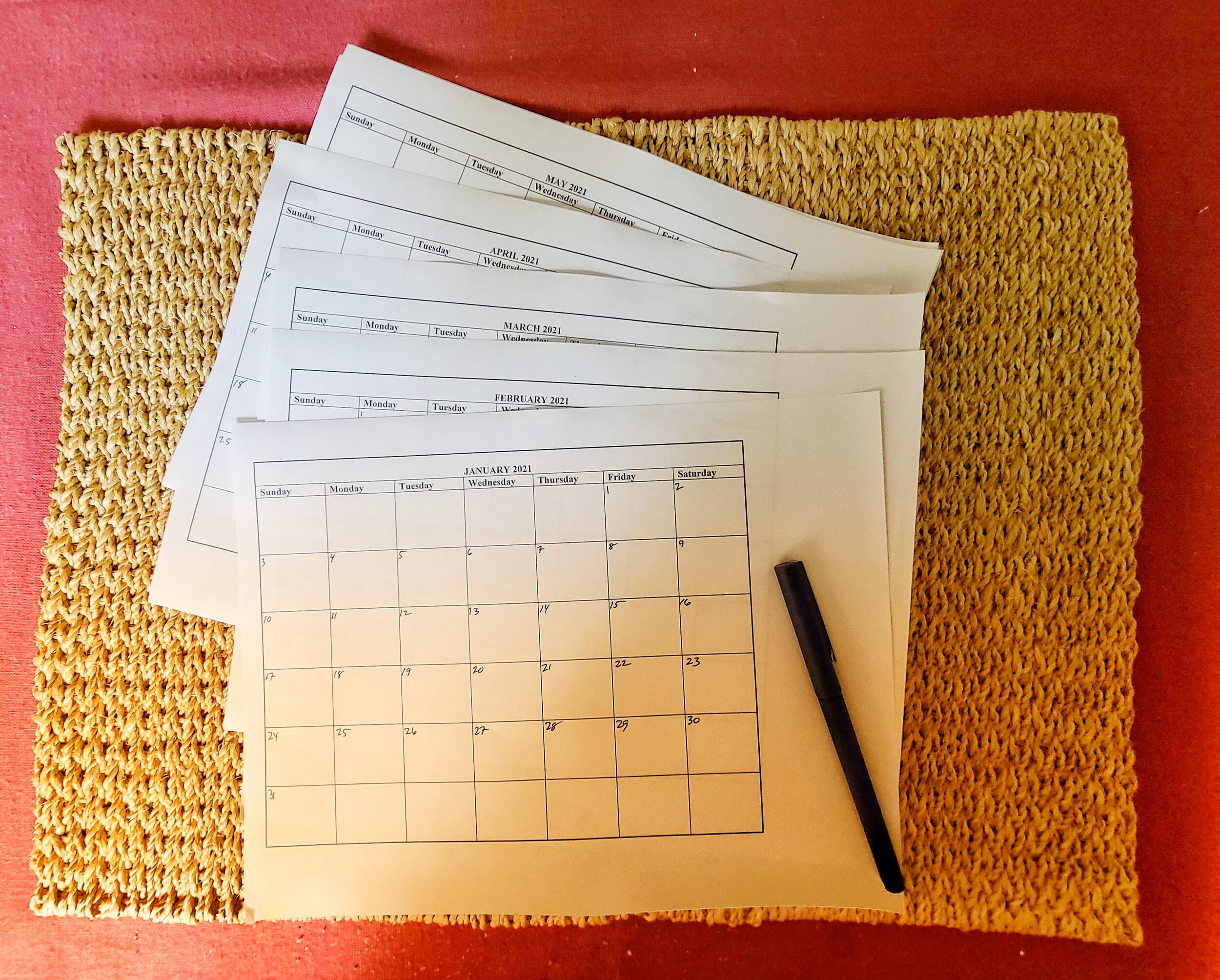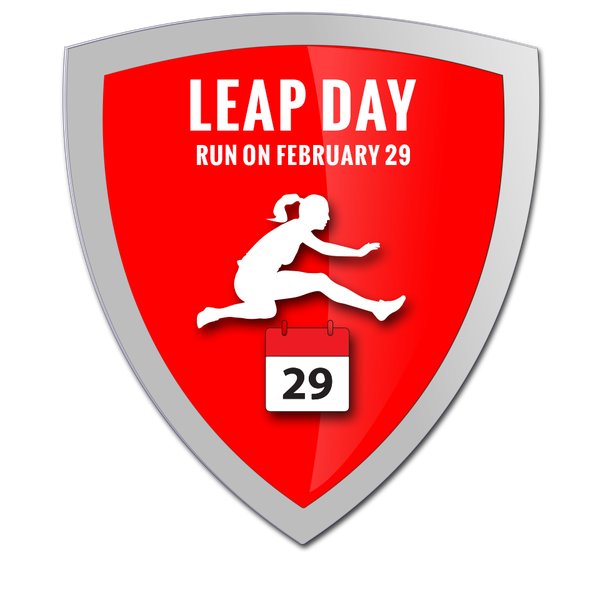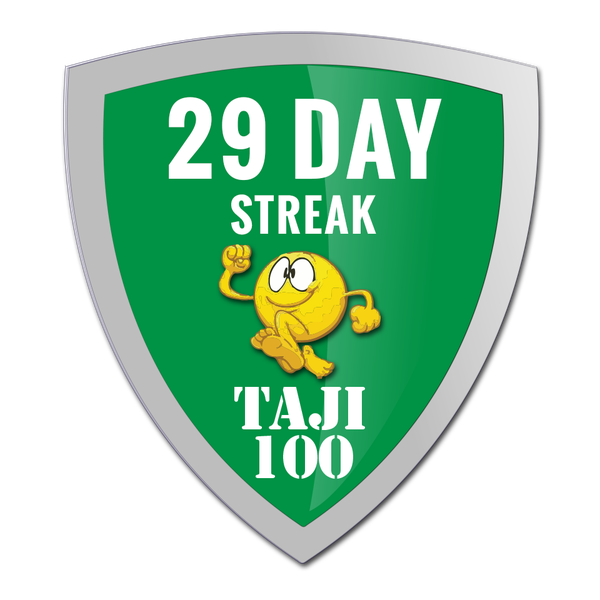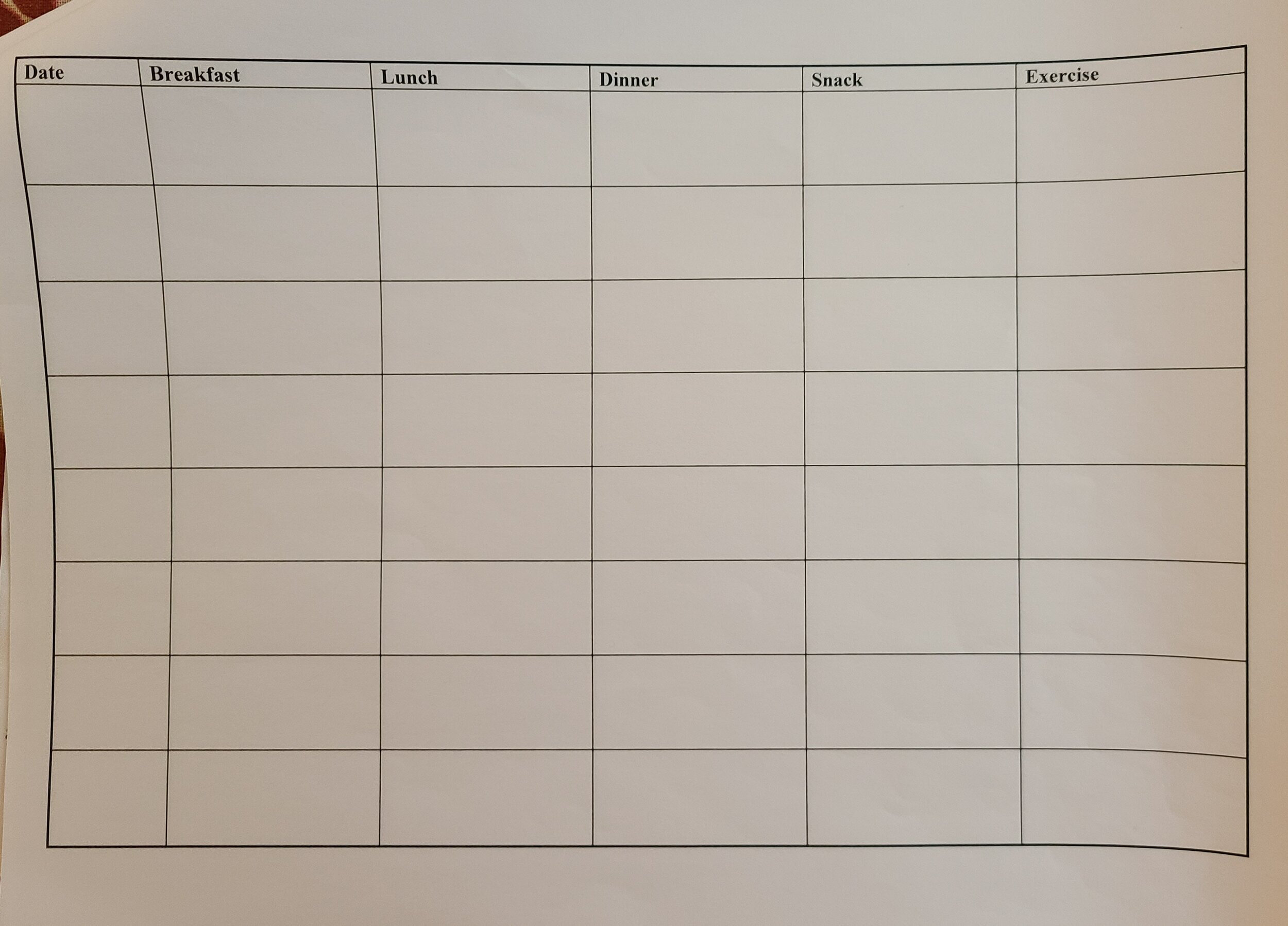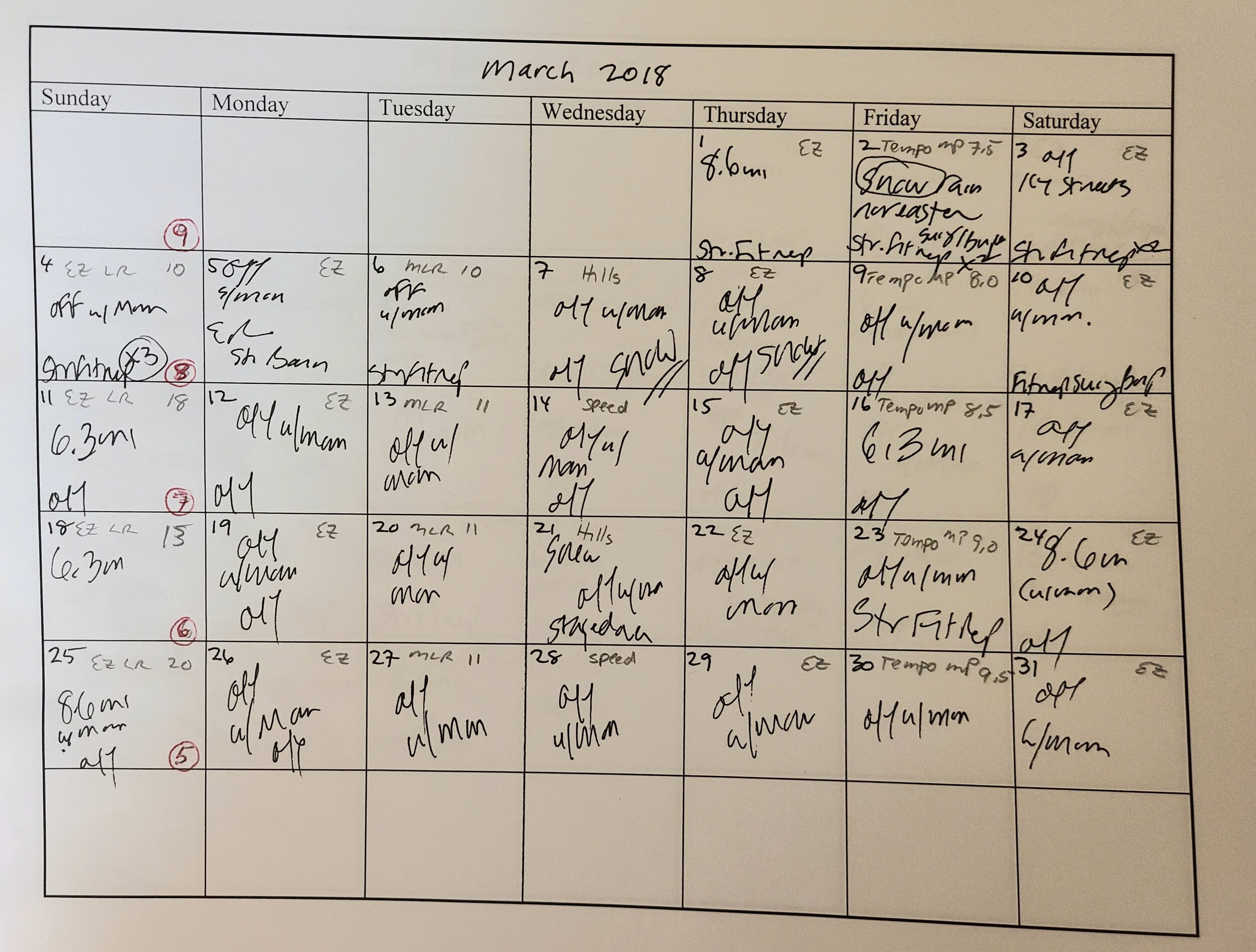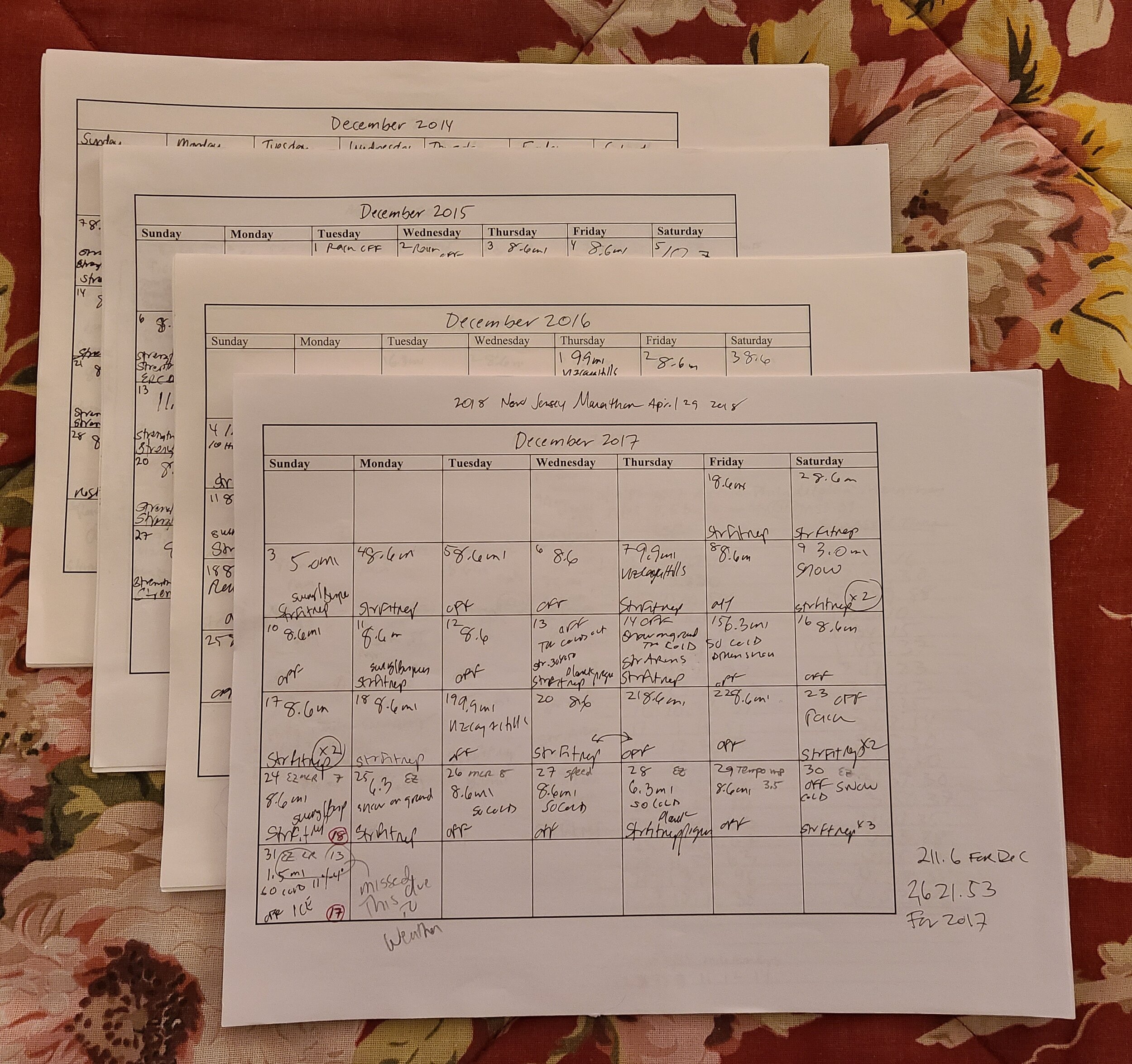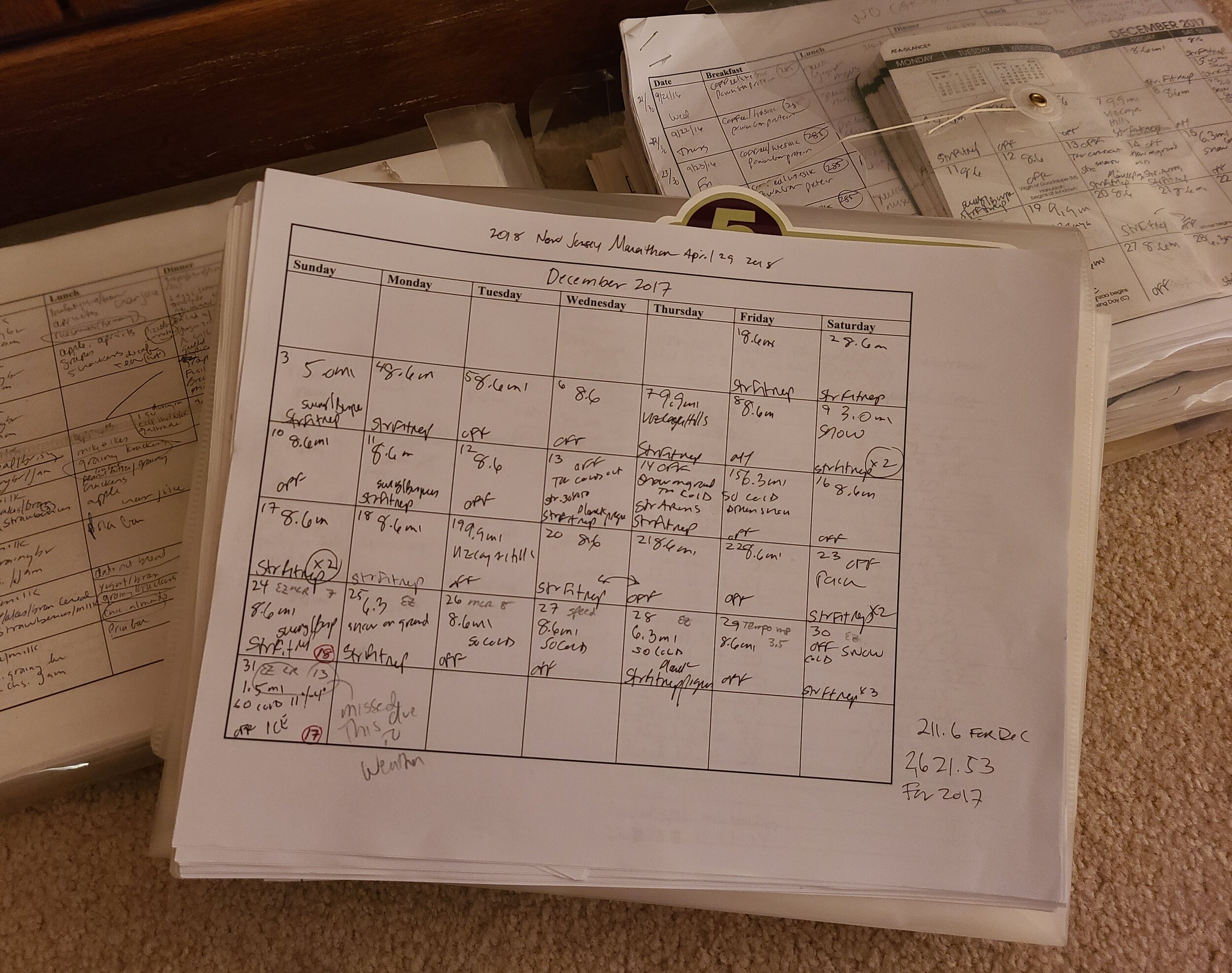Keeping Track
At the end of every year, I tally my running miles as empirical evidence of my fitness journey. On Thursday, December 31, late on a sunny morning since I had the day off, I logged 9.5 miles along the trail, with steam rising from the creek as it met the chilly air, bringing my 2020 year-end total to 2,534 miles. That fell short of the close to 3,000 miles I ran in 2019, but exceeded those for 2018 – the year my mother died and I didn’t run for 3 months and then I moved to California.
This unnerving year, I’d gone to my back-up goal, or even tertiary goal, since my running and training derailed due to the challenges of the pandemic. Training days slipped off my calendar like setting new finish time goals when you’re in the last 6 miles of a marathon and the pace teams are passing you one by one, and you see your race goal fading with the blur of their pace flags in the distance. You say to yourself, “OK, not 4 hours this time.” Then, “not 4:15.” Well, “maybe 4:30.” And finally, you resign yourself to, “how about just under 5:00?” We’ve all been there.
2020 was a year like no other. Without race dates on my calendar, my training took a laissez-faire attitude. If I missed a 15-mile long run and did 10 instead, my reaction was: “whatever!” Or, “I don’t care – I’m not going to be running a race.” It’s been hard coping with a year without racing. What hasn’t changed is keeping track: remaining accountable to myself; acknowledging the good with the bad.
As long as I’ve been running and training for races – since 1999 – I’ve been chronicling my running and fitness activity in as much detail as I documented the other elements of my life in journals that I’ve been writing in since I was a teenager.
I’ve kept an ongoing account of my daily miles, training schedule, cross-training, nutrition, weight, shoe miles, recovery and rest days, even the weather. I’m old school. OK, I’m old. But, for me, there’s nothing like a monthly calendar for seeing a visual of my fitness status. Sure, I could download a pre-formatted calendar, or act like a millennial and track all my fitness on an app like Runkeeper or Strava. I could probably download all the data from my Garmin into a spreadsheet and assess all the stats (my heart rate, pace, cadence, VO2 max, calories burned) on any given day. I’m sure it gives you charts and bar graphs with color overlays. But that’s just not me. That might make you think I’m a Luddite, but I like writing my miles each day on a paper calendar. It’s satisfying to see a little square fill up with an accomplishment like 10 miles one day – as much as it’s disappointing to see a failed attempt with only 3 miles instead. Don’t get me wrong, I appreciate all the 21st century electronic tools we have at our fingertips to make keeping track easy. I like the simplicity of a calendar, of putting pen to paper with nothing fancy about it. It reminds me of the simplicity of running when you drop all the gear and put sneakers to pavement and just run by feel.
The week after Christmas, as I logged my miles from my regular pre-dawn Monday 10K with the Almaden Lake crew, I suddenly realized it’s the end of 2020 – good riddance to this disastrous year – and I should put my calendar together for 2021. I have a document in my computer that I print out. It’s just blank calendar pages with the days of the week typed in bold. I had to search for the file, since it was buried amid newer ones, and I’d originally created it in 1999. That’s three or four computers and some 30-plus marathons ago. It’s been updated a little since then, and reformatted a bit, but it’s essentially the same. I printed out 12 blank pages and pulled up a printable 2021 calendar so I could see the corresponding dates for each month. Then I filled in the dates on my handmade calendar. It took a few minutes, but afterward I had a fresh year ahead of me – all the days blank and full of possibility.
I’ll think about my goals for the year and fill in a few dates with some concrete “events” – all virtual in 2021. It will help me remember when the deferred races are supposed to be held. I don’t think any of them will take place in person, but I’ll write them down anyway. There are a few Run Local Events and running challenges I signed up for just to inspire me to get in some miles in the next 6 months. And I’ll put Taji 100 on the calendar for February. If you’re not already familiar with it – and signed up – hop on https://taji100.com and register. It’s not too late. Taji 100 is a virtual challenge to run at least 100 miles during the 28 days of February. You get accolades in the form of “badges” for each milestone you achieve (e.g., early bird running at dawn, running on Valentine’s Day, President’s Day, a 21-day streak, a midnight run, and more.)
It’s a friendly competition among your peers in the greater running community. Plus, the program’s mission is “to encourage health and fitness by promoting an active lifestyle…and inspire healthier Americans.” And it “raises awareness and support for American military service men and women.” It’s an important cause. I got my Taji 100 packet in the mail and the medal is a work of art!
“The mission of Taji 100 is to encourage health and fitness by promoting an active lifestyle. Working collaboratively with the members and businesses of our communities, we offer products, education, resources, and services though a peer-supportive network. While encouraging, motivating, and inspiring healthier Americans, we simultaneously raise awareness and support for American military service men and women by collecting donations for military related non-profit charity organizations.”
If this were any other year, I’d be looking ahead to marathons on my calendar, mapping out the 18 weeks prior to the race, and putting in my long runs and tempo workouts. In July, there’s the San Francisco Marathon, deferred from 2020. And next December, there’s the California International Marathon, also deferred. Will they happen in 2021? Should I put my schedule together anyway? Will we get vaccinated in the spring? Will there be herd immunity by the summer? Or next winter? I don’t know, but I need a goal date. I need to stay accountable.
You might wonder, why a calendar instead of a log book or a running app? There are plenty of options out there: calendars you can print, formalized running books, apps like Garmin Connect, Strava, Runkeeper, MapMyrun, Apple, Nike Run Club, Runtastic, Pumatric.) But an actual monthly calendar gives you a visual of your workouts at a glance. You can map out your training schedule day by day and see exactly where you are: how many weeks until your marathon; when to cut back; when to step up your miles; when to rest. You can add in your cross-training, strength workouts, cycling, spinning, yoga, pilates. If you swim or bike and are training for a trialthlon, you already know you need to stay on top your training bricks. You can also add in other exercise: hiking days; walking; biking with your kids; taking a break bird watching even; stretching, recovering, or just resting.
You can note everything on a calendar and assess whether your training is on point; the good and the bad. Are you meeting every goal per week? Or are you completely off and missing your training marks. Have you been successful with your nutrition or has your eating plan failed? Since I started running long distance and concentrating on endurance, my weight has fluctuated by only 2 or 3 lbs – a little more in the winter, less in the summer. But this year has put a wrench in all of that. I gained a Covid-8 or -9 lbs. It’s slowed me down. I’m not running enough. I’m emotionally eating everything I shouldn’t. I won’t even try on my jeans – but, then again, I don’t really need to, do I? I’m not going anywhere.
A calendar is not only visual, it’s visible. Mine isn’t hanging on the wall behind a door or stored in my phone. I keep it on the corner of the dresser in my bedroom (in front of a photo of my cats and next to a basket with hair thingies and headphone ear buds) so I can consult it every day. There’s a pen sitting right on top of it, poised to fill in the day’s fitness activity. It’s an in-my-face reminder that running is an integral part of my day. If I’m training for a marathon, each day’s workout is penciled in and when I complete the workout, I switch and mark it in ink.
Just looking back over this past calendar year, I can see a map of my running life. In 2020, I hit 2,534 miles in a year filled with setbacks. January started off full of hope and promise. In February, I repeated my Taji 100 over-achiever accomplishment with more than 300 miles (a goal I’d set the year before). But March roared in like a lion and never left: on the 14th, the Shamrock 10K was cancelled; on the 22nd, the Napa Valley Women’s Half cancelled; then just quarantine, quarantine, quarantine. It kept going each month. The Rock ‘n Roll San Francisco Half, cancelled. The Silicon Valley Half, cancelled. In July, The San Francisco Marathon deferred. In August, there were fires, smoke, heat. In September, more smoke, and then one of my cats died. Then, in October, after much debate, CIM cancelled. A year’s racing curtailed.
On a calendar, there are notations you just won’t see in the data from your run apps. There, jotted in the marginalia for March, just past the Ides and before St. Patrick’s day, I wrote “WTF Covid-19.”
Of course, there’s a downside to a paper record. You make errors – although sometimes they’re in your favor. My friend Iraj and I were comparing our year-end totals the other morning while we ran (socially distanced, but together). I mentioned how close I was to my 2,500 mile goal, and that I needed only 25 more miles before the year ended. I’d have 4 more days to log miles. Later that day, I checked my calendar to see exactly where I stood. And I realized I hadn’t finished adding up miles from October. I’d written “miles as of 10/26,” but had not factored in the rest of the month. I corrected my math and Bam! There were the extra 25 miles I needed and I was already at 2,515.82, four days before the year ended. The rest the week’s miles were icing on the cake.
I did take a look at my Garmin statistics for 2020 and while they show an impressive spread of data (2,663.9 miles for the year, including walking and hiking, and 202,154 calories burned) they don’t represent as accurate a picture of my actual running year as I can evaluate in my detailed, hand-filled calendar. I only include running in my year-end totals. And those stats don’t tell me what I was thinking at the time. How hard my effort was given what I was dealing with in my life that day.
I’ve kept all of my hand-written calendars and nutrition logs as a record of my fitness over the last 22 years. They form a stack of more than 3 reams of paper! I can consult my previous calendars to see what goals I put in place and it’s interesting to review where I’ve been in my running history, flipping through the calendar pages.
Looking back, I can track my running life, diet woes, and milestones in my running history. The training leading up to my first marathon in Washington, D.C. at the Marine Corps Marathon, in 2001; running in New York City, Philadelphia and Hartford; my attempts at qualifying for the Boston Marathon, and then, how I altered my training to prepare; or how my overall marathon results differed when I added strength training in addition to running.
When you add it all up, the numbers are even more impressive than the data you see on a Garmin. Think about this: 22 years of keeping track represents 1,144 weeks, and at approximately 50 miles a week, that’s 57,200 miles of running. 8,037 days. 192,888 hours. Or 11,573,280 minutes of fitness.
Before I go to bed each night, I write everything down. I download my run data from Garmin connect, log my shoe miles in a notebook, put in my nutrition (good or bad) from the day, note my weight, and the weather. I make it a ritual and you can too. Keep track if you’re serious about your health and fitness goals. Stay accountable.




